Name Juana Macarrona | Died 1947, Seville, Spain | |
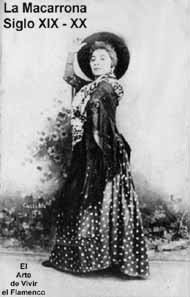 | ||
Dolores Abril - La Macarrona (1994)
Juana la Macarrona (May 3, 1860 or 1870 – April 17, 1947) was a famous Spanish flamenco dancer (bailaora). Born as Juana Vargas de las Heras in the barrio Santiago at Jerez de la Frontera in Andalusia, she later added the name La Macarrona. Her Gitano parents started her on her dancing career, which lasted well into the twentieth century.
Contents
- Dolores Abril La Macarrona 1994
- Early career
- Her flamenco style
- Personality
- Renown as a dancer
- Her stage name
- Later years in flamenco
- Concurso de Cante Jondo
- El Amor Brujo
- Carmen Amaya
- Las Calles de Cdiz
- Flamenco memory
- References
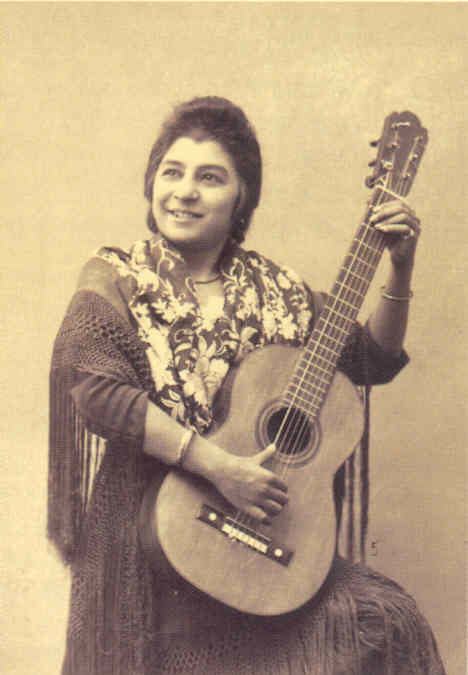
Early career
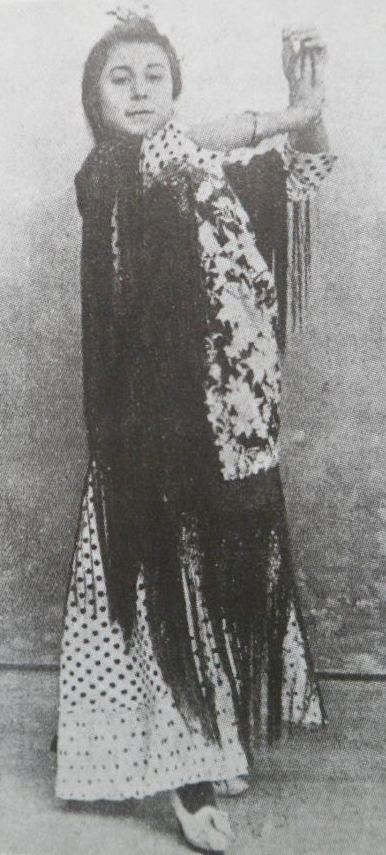
Her mother was Ramona de las Heras Valencia, a flamenco singer, her father Juan de Vargas Barrío, a flamenco guitarist. At the age of seven Juana began dancing in the streets to their accompaniment. Hers was a flamenco family. Among her gypsy ancestors was Josefa Vargas, also a bailaora. More distant ancestors were among the earliest flamenco performers known. María Vargas, Juana's sister, was the lesser-known dancer María La Macarrona. Juana landed her first regular job at a café cantante in Sevilla, but she earned more in the streets by the equivalent of "passing the hat". Later she danced beside the singer El Mezcle at a flamenco café in Málaga.
At about sixteen Juana was 'discovered' by Silverio Franconetti, the legendary flamenco cantaor (singer), at whose Café Silverio in Sevilla she then danced. Quickly La Macarrona became a well-known bailaora throughout Spain, dancing in company with the best flamenco performers (singers, dancers, guitarists) at well-known café cantantes. By the early 1890s Juana was appearing at illustrious venues in Paris, and elsewhere in Europe. Entertained were several "zares de Russia", a "shah de Persia", various "reyes, principes y duques", as well as "señoríos" and "comerciantes". La Macarrona performed her baile at the Paris Expostion of 1889. She had become rich and famous.
Her flamenco style
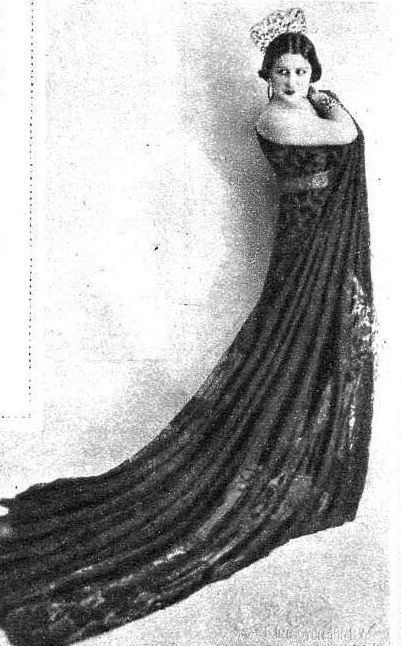
In the performance of her arte flamenco, La Macarrona apparently followed the then traditional style of the baile, with attention directed to the upper torso along with movements of the arms and of the hands. The brazos y manos she did knowingly, aware, displaying strength with a delightful ease. The bata de cola she moved beautifully and impeccably. According to an experienced, contemporary writer, her zapateado accents were dramatic and sharp. Yet the footwork then current in flamenco performance might not be as developed as today's.
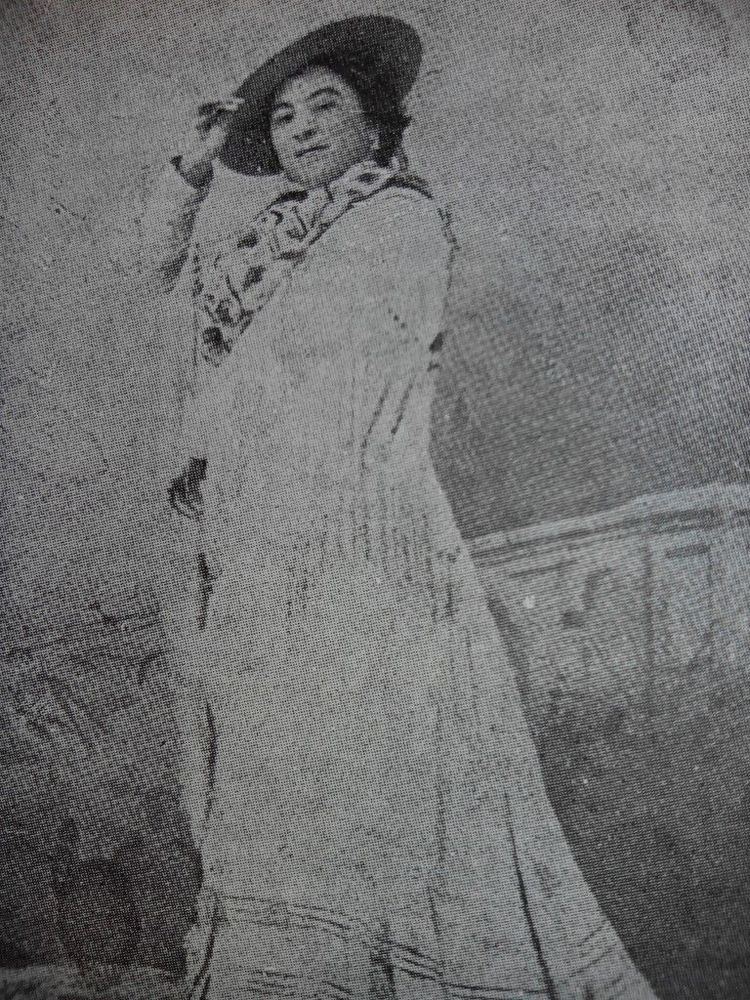
Juana Vargas la Macarrona "poseía una asombrosa flexibilidad en los movimientos del cuerpo y dominaba el manejo de la bata de cola que enroscaba a sus pies después de dar las vueltas con encreíble maestría." She favored the soleares, the alegrías, and bailes "festeros" (festive dances). By accounts La Macarrona was "a fireball, her dance full of gypsy temperament." It is said "her duende was exceptional."
Personality
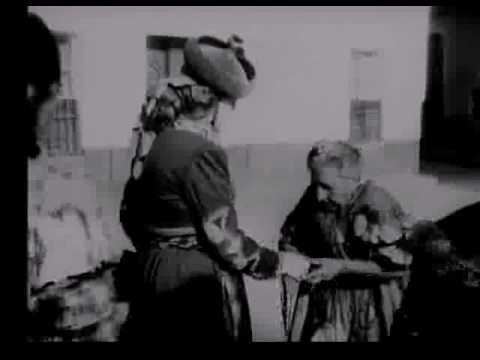
She also became known to aficionados for quotable, impromptu expressions. For example, after performing with flamencos often in Paris Juana had become familiar with speaking French. On a later trip north from Spain, she was asked to make arrangements when the train reached Paris, but upon arrival nobody could understand her. She explained, "It's not that my French isn't good, it's just that they've changed the damned language since I was here last."
Renown as a dancer
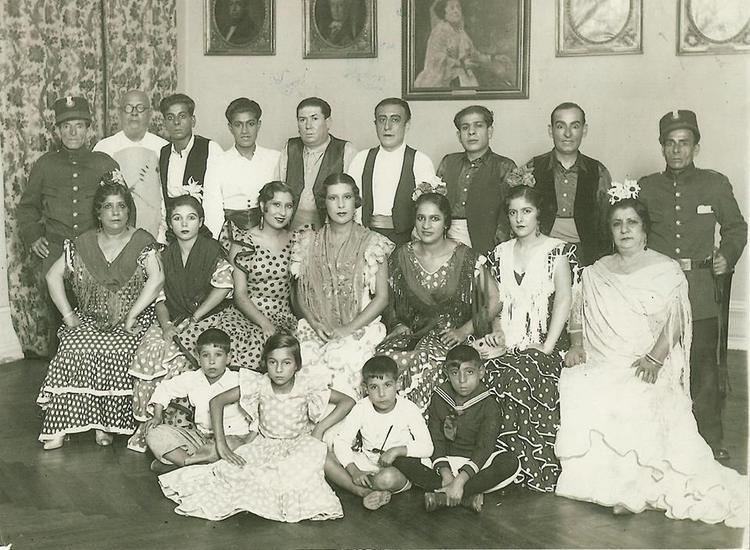
In the flamenco cafés she remained for decades much in demand, the performance star among bailaoras. Juana "es la que hace muchos años reina en el arte de bailer flamenco". In particular at the Cafe Novedades in Sevilla for fifteen years she held sway, setting the pace, defining the art. When La Macarrona 'consented' to dance, she might arise from her place like a queen of Sheba, sovereign, knowing, riding the music, proud of her art, perhaps too proud. As she raised her arms above her head it was as if favoring the world with the sight of her baile. Her vital moves elicited 'lightning and thunder'.
Her reputation in international dance was correspondingly high, particularly the ballet and classical music world. Four well-known traveling companions saw her dance, circa 1917: the impresario Serge Diaghilev, the composer Manuel de Falla, the choreographer and dancer Léonide Massine, and the bailaor Felix Fernandez García.
"In Seville we went to see Ramirez and Macarrona, the two outstanding flamenco dancers of the day. Their dancing more than lived up to our expectations, and we were dazzled by the ferocious power and elegance of their performance."
The "Ramirez" mentioned here is probably the renowned bailaor Antonio López Ramírez or "Ramirito" (1885-1930).
On stage her elusive movements drew rapt attention, almost reverence from many audiences. She attracted poetic lines. Her stage presence was radiant, her rhythmic grace fluid. With her turns of emotional intensity, and her sudden stillness, she'd conjure a fragrance of roses. La Macarrona "le injertó al baile una antiquísima fuerza emotiva, llena de feminidad y gracia, como en los soleares de su creación. ... Y por la cintura, por los brazos, le subía el chorro de la danza... ."
Her stage name
La Macarrona was the stage name of Juana Vargas. The name is said to be taken from two of her flamenco ancestors named Macarrón, who flourished in the 18th century: Tío Juan Macarrón and Tío Vicente Macarrón. Juana's family was long accustomed to the performance of flamenco arts. Her namesake Tío Juan Macarrón of Jerez de la Frontera is described as being a cantaor (flamenco singer) of 18th century Spain and "Uno de más antiguos intérpreters conocidos." (One of the earliest flamenco interpreters known.) For another of her namesakes, Tío Vicente Maccarón, an equal antiguity and rôle is referenced.
Macarrona in English would mean "macaroni or macaroon". In addition to the foods, the word "macaroni" in 18th century England also signified an "English dandy... who affected foreign mannerisms and fashions." This second meaning originally derived from Italian, and is retained in the Spanish cognate "macarronea" [English: "macarronic"], which currently is defined as "burlesque verse" mixing "real or coined words from two or more languages." So that, if in itself it carries meaning in addition to its family ancestry, Juana la Macarrona would mean something like "Jane with the exotic way of talking", fitting her poetic style, or her knack for off-stage humor. More generally, Juana la Macarrona would mean the dancer as a "dandy" of the flamenco arts.
Later years in flamenco
Juana la Macarrona was able to maintain her dancing career well past sixty. In part, however, she performed motivated by necessity due to the loss of much of her wealth in a house break-in. Stolen was a small fortune in "cash and jewels". Then Gitanos often led lives guided by ancient tribal values, and enjoyed a rural vitality not accustomed to opening a bank account. In 1910 Juana established permanent residence in Sevilla. She danced in the motion picture Violetas Imperiales directed by Henry Roussel in 1931.
Over the years La Macarrona had taught many younger dancers. Her favorite among them was Teresita España. Florencia Pérez Padilla, the Rosario of the performing pair "Rosario and Antonio", also received instructions in flamenco dance from La Macaronna.
Concurso de Cante Jondo
In 1922 Juana appeared at the Concurso de Cante Jondo held in Granada. This event, promoted by composer Manuel de Falla and poet Federico García Lorca, was chiefly a contest for amateur flamenco artists, but it also attracted veteran performers. Honored as a judge for the contest, in that role La Macarrona joined three other stars of flamenco, the cantaors Antonio Chacón and Manuel Torre, and the cantaora La Niña de los Peines. Juana's presence richly animated the Concurso festivities, for one, by her excited jaleo cries of "¡Lapoteosis!" [English: "thunderstrike!"]. Later the maestra herself danced, to a trio of guitarists including Ramón Montoya, while the young Manolo Caracol sang, and Gitanas of the Sacromonte punctuated the music with their palmas. Eduardo Molina Fajardo writes:
"La Macarrona, flexible como si se hubiera quedado plantada en sus enolvidables dieciséis años, se hizo una diosa de rito antiguo, lleno de parsimonia y de misterio, que luego recobraba ardor y acelerado ritmo. Su traje de flamenca se transformaba en ola, en viento, en flor."
Antonia Mercé "La Argentina" attended the Concurso. A bailaora herself, she turned her gaze to La Macarrona as she danced. When Juana sat afterward La Argentina came to her and then gently knelt down at her feet. Carefully she took off her dancing shoes, then carried them away!
El Amor Brujo
In 1933 Manuel de Falla's ballet composition El Amor Brujo (Love the Magician) was re-staged in Cádiz, accentuating its flamenco roots. Produced by Encarnación López (La Argentinita), it "stressed the folkloric elements of the music and, as a result, was more 'flamenco' than other versions."
Three elders of flamenco dance, La Macarrona, La Malena, and Fernanda Antúnez, were featured. They played the roles of brujas during "the scenes in the gipsy caves". The three also danced an alegrías at the show's end. It starred flamenco dancers Vicente Escudero, Pilar López, Rafael Ortega, Antonio de Triana, as well as La Argentinita. The poet García Lorca attended the "triumphant" first performance, which was dedicated to him. This production of El Amor Brujo was said to be "the birth of Ballet Español". After opening in Cádiz (de Falla's birthplace), La Macarrona with the brujas went on the show's tour of Spain.
Carmen Amaya
In early 1936 the bailaoras La Macarrona and La Malena had a memorable, emotional meeting with the rising international star of flamenco dance, Carmen Amaya (1913-1963), whose reputation already reached to the Americas, and to commercial film entertainment. The occasion was a performance by Amaya with the cuadro 'Salón Variedades' in Sevilla. The meeting was said to be "one of the great moments" in Amaya's life. During those years the two elder gypsy dancers were being celebrated as "the most famous in the grand old style of the jondo dance." Both "full of years and infirmities" yet they were "basking in the admiration and homage of the Sevilla public, that loved them dearly."
The flamenco event began with a soleares performed by Carmen Amaya. The hush of the audience inspired Carmen and soon "her demons took hold of her. 'And, Good Lord, what broke loose there!' La Macarrona and La Malena were on their feet, crying. It was a dream: they had come back to life in the person of Carmen." In the "magic circle of flamenco art" a new star had begun to shine. La Macarrona evidently cried, "You are the Queen!" The audience laughed and cried, encouraging Amaya who kept dancing, her eyes "full of tears". She'd be the new Faraona [Pharaoh] of flamenco dance.
Las Calles de Cádiz
In 1933 and again in 1940, La Macarrona toured with the celebrated stage show "Las Calles de Cádiz" (The Streets of Cadiz). It was produced by Encarnación López "La Argentinita", then in the flower of her career. She also played a leading role in the musical show. During this era, flamenco song and dance were often moved from the café... into the theater.
In Las Calles de Cádiz, "the colorful life of the barrio Santa María" was brought to the stage. The flamenco artists played a variety of city characters while occasionally performing their singing and dancing to guitars. This Cádiz barrio was then an entertainment spot, with "tiendas de montañés (grocery store-bar combinations) open all night" and streets full of aficionados. The lively show included well-known singers and guitarists. Also featured for flamenco nostalgia were veteran dancers, the stars La Macarrona and three other elder bailaoras, whose pure flamenco dance continued to draw olés and other cries of appreciation. The roles they played were brujas (sorcerers). Las Calles de Cádiz of 1933 is said to have been "the high point of theatrical flamenco." In 1940 La Macarrona did this show again, produced by Conchita Piquer.
Flamenco memory
In 1947 La Macaronna died in Sevilla. It was at a time when the flamenco arts in general had suffered a loss of popularity. Hence the once well-known bailaora passed from the scene "poor and forgotten". She herself thought her beloved flamenco was dying. "Los niños modernos, la juventú, nos mira como cosas raras, sin pensá que hemos jecho yorá con nuestras gitanerías a tre generaciones."
Yet a decade later the flamenco arts were experiencing a grand renaissance, in which Juana Vargas as La Macarrona was well remembered. "Everything that can be said about La Macarrona is not enough," had written Ferdinando el de Triana, a flamenco cantaor, in 1935. She is "appraised by many as the greatest female flamenco dancer of all times. Others claim she was the greatest of her epoch."
